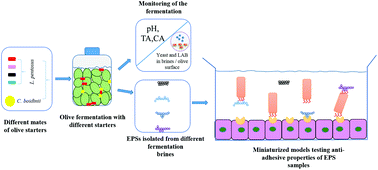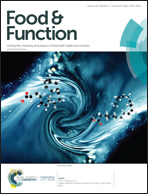The use of starter cultures in the table olive fermentation can modulate the antiadhesive properties of brine exopolysaccharides against enterotoxigenic Escherichia coli
Abstract
The present study aimed to evaluate different mates of Candida boidinii and Lactobacillus pentosus strains as starters in green table olive fermentation. Changes in fermentation characteristics as well as changes in the functional properties of the microbial exopolysaccharides (EPS) produced during the process were registered. The in vitro adhesion test demonstrated that most EPS samples could specifically attach ETEC K88. In vitro studies with porcine intestinal cells showed the improved blocking activity of the fimbria (blocking test) when the mutant strain L. pentosus 119-14MT was used alone as a starter. All EPS samples showed the ability to block receptors in the cells (exclusion test) although without differences between starter treatments. In the displacement test, EPS samples failed to remove the pathogen once attached. According to these results, L. pentosus 119-14MT, a high EPS variant, seemed to be the most effective starter improving the anti-adhesive properties of brine EPS and increasing its ability to block the ETEC K88 fimbria. These results illustrate that the anti-adhesive properties of the EPSs produced during the traditional fermentation of olives could be modulated by the use of defined starters. This opens the door to new fermentation processes aimed to produce green table olives as functional food to prevent ETEC diarrhea.



 Please wait while we load your content...
Please wait while we load your content...